Killing the truth: Journalists who exposed genocide in Gaza and paid with their lives
By Alireza Akbari
On December 18, Palestinian journalist Ahlam Nafed, who was residing inside the Indonesian Hospital, documented bullet marks on the hospital walls while reporting on the attack.
Nafed, reporting for Drop Site News, a US-based independent media outlet, said the Israeli regime attack occurred without any prior warning and noted that there were no military targets or combatants in or near the hospital -- only patients, staff, and their families.
“Almost every night when tanks enter next to the hospital, they shoot directly at the hospital building,” she said at the time, speaking of the genocidal war and the horrors inflicted on people in Gaza.
More than a month after her December report, on the 466th day of the Israeli genocidal war on the besieged Gaza Strip, Nafed was killed in an Israeli attack while walking to Al-Shifa Hospital.
She became the 205th Palestinian journalist to fall victim to the Israeli regime’s attempts to silence the voices of truth in Gaza, armed not with rifles but with pen, paper, and camera.

In a statement, Drop Site News expressed grief and condolences over the killing of Nafed, a journalist and photographer who spent 15 months fearlessly documenting the genocide in Gaza.
“For the past 100 days, Ahlam chronicled the genocide in northern Gaza, capturing evidence of Israeli war crimes from the besieged Indonesian Hospital,” the statement read.
It also emphasized the importance of Nafed’s images and words, which brought to light atrocities that might have been silenced, allowing the world to witness the brutal reality unfolding in the Gaza Strip.
“She was one of the last remaining voices in northern Gaza—a voice the world desperately needed. Without her, the full extent of Israel’s actions might never have been known.”
A week before her death, Nafed tragically lost her father, who passed away from a chronic medical condition after being unable to access treatment due to Israel’s blockade on the strip.
Nafed, along with 205 other Palestinian journalists, both men and women, lost their lives while trying to expose the Israeli genocidal crimes in the Gaza Strip since October 2023.
The shocking tragedy of journalists in Gaza has been met with silence and apathy from the international community, making the war on Gaza the deadliest for journalists in modern history.
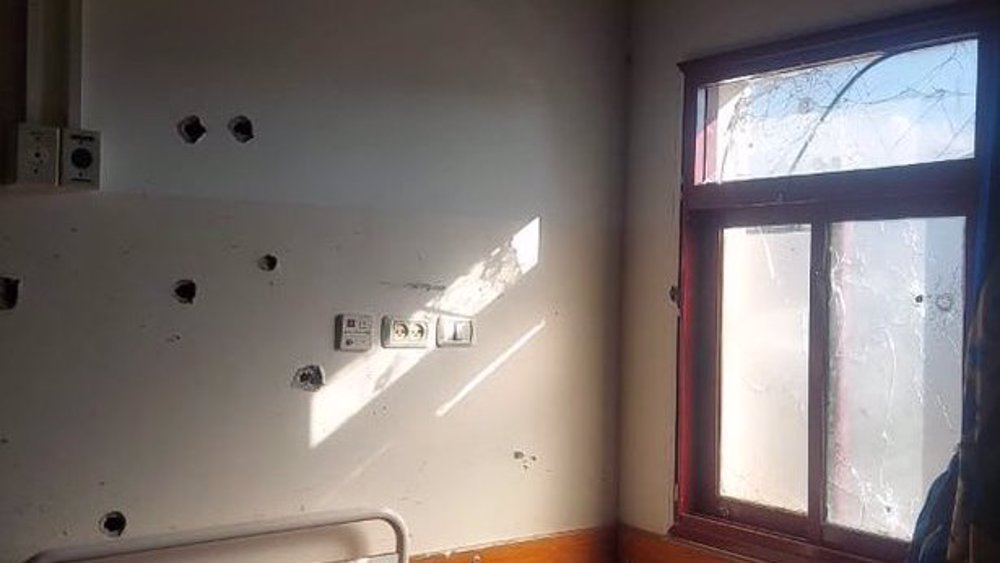
The vulnerability of media workers and their tireless, extensive, and thorough reporting in the Gaza Strip was also expressed by the Press TV correspondent in northern Gaza, Abubaker Abed, on January 9, 2025, coinciding with the 459th day of the Israeli war on Gaza.
“You’ve seen us killed in every possible way. We have been immolated, incinerated, dismembered, and disemboweled. And recently, we’ve been frozen to death,” the 21-year-old journalist said in a passionate speech that grabbed headlines worldwide.
“We are being genocided to move your dead consciences to help a population that has seen every sort of torture and tasted every type of death,” he added.
Abed criticized the silence of the international community over the Israeli massacre of journalists.
“Today we are all standing here after Israel’s impunity against us. And we don’t know how many journalists should be killed so you can really act and stop Israel’s impunity against us.”
In response to his speech, American journalist and TV presenter Abby Martin also took to X (formerly Twitter), warning about the dire situation of journalists in Gaza
“Journalists are being systematically hunted and killed in Gaza, they shouldn’t have to plead for solidarity,” wrote the journalist who hosts The Empire Files, an interview and documentary series
"Even the press vests we're wearing right now mark us as a target!"
— Press TV 🔻 (@PressTV) January 9, 2025
Press TV's journalist in Gaza, @AbubakerAbedW, delivered a powerful speech about the genocide in Gaza, emphasizing Israel's unchecked crimes against Palestinian journalists. pic.twitter.com/BUfF8gKt58
Nafed’s martyrdom, along with other journalists killed by Israel in Gaza since October 2023, can be examined within the context of Israeli impunity in targeting media workers, say activists.
A day after her martyrdom, Palestinian journalist and IRIB World Service Sobh Media Festival awardee Ahmed Abu al-Rous was killed by Israeli forces only hours before the announcement of a ceasefire between the Israeli regime and the Gaza-based resistance movement Hamas on January 15.
He was killed along with four other people, including his brother Mohamed, in an Israeli airstrike that targeted his vehicle at the Nuseirat refugee camp in central Gaza.
Following Abu al-Rous’ martyrdom, his photo with Palestinian journalist Ayman al-Jiddi, who was previously killed in an Israeli strike, went viral on social media.
On the same day that Nafed was martyred, another Palestinian journalist, Mohammed al-Talmas, succumbed to his injuries sustained in an Israeli strike on Gaza City.
Three days earlier, on January 11, Palestinian journalists' rights groups, including the Palestinian Journalists Syndicate, condemned the fatal attack on Saed Abu Nabhan, a freelance cameraman, by an Israeli army long-range rifle in the central part of the Gaza Strip.
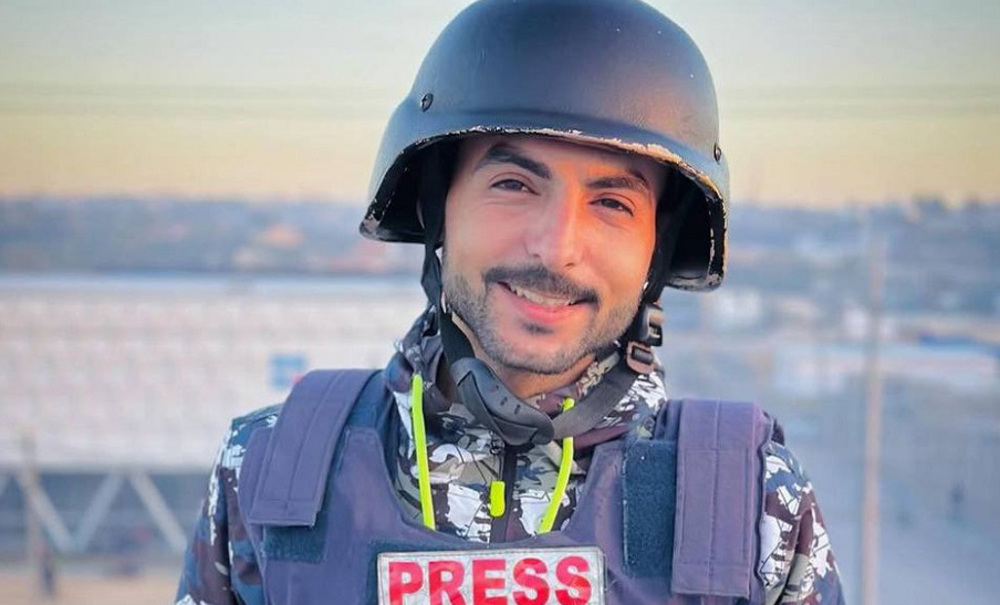
The media advocacy group characterized Abu Nabhan’s killing as a continuation of the systematic targeting of Palestinian journalists, emphasizing that such actions violate international law.
January 2025 saw another journalist being killed by the apartheid regime forces. Palestinian writer, poet, and journalist Mohammad Hijazi was killed in an airstrike on northern Gaza’s Jabalia refugee camp on January 5.
Two days before that, an Israeli strike killed another Palestinian journalist, Omar al-Dirawi, along with his parents in central Gaza.
December 2024 was particularly bloody for journalists in Gaza, with 10 of them killed by Israeli forces.
In a horrendous crime, the Israeli regime hit a broadcast van, killing five Palestinian journalists in central Gaza who were covering events at al-Awda Hospital in the Nuseirat refugee camp.
The victims of the Israeli attack included Fady Hassouna, Ibrahim al-Sheikh Ali, Mohammed al-Ladah, Faisal Abu al-Qumsan, and Ayman al-Jadi.
On December 16, journalist Ahmad al-Louh, 39, was killed in a strike on a Civil Defence post in the central Nuseirat refugee camp. Alongside al-Louh, more than 50 people were also killed in Israeli air and ground attacks across the Gaza Strip.
Mohamed Jabr Al-Kayrawany, 39, a Palestinian journalist who worked as an editor at the SANAD News Agency, was killed in an Israeli airstrike on his home in the Al-Bureij refugee camp in central Gaza on December 14, 2024. The strike killed Al-Kayrawany, his wife, and their three children.
On the same day, Mohamed Hammed Balucha, 38, also known as Mohammed Balousha, was killed by an Israeli drone strike while returning from a medical checkup at the Sheikh Radwan neighborhood clinic in northern Gaza City.
Eman Hatim Al-Shante, 36, a Palestinian journalist, was martyred on December 11, 2024. She was killed along with her children in an Israeli airstrike targeting a residential building in the Sheikh Radwan neighborhood of Gaza City.
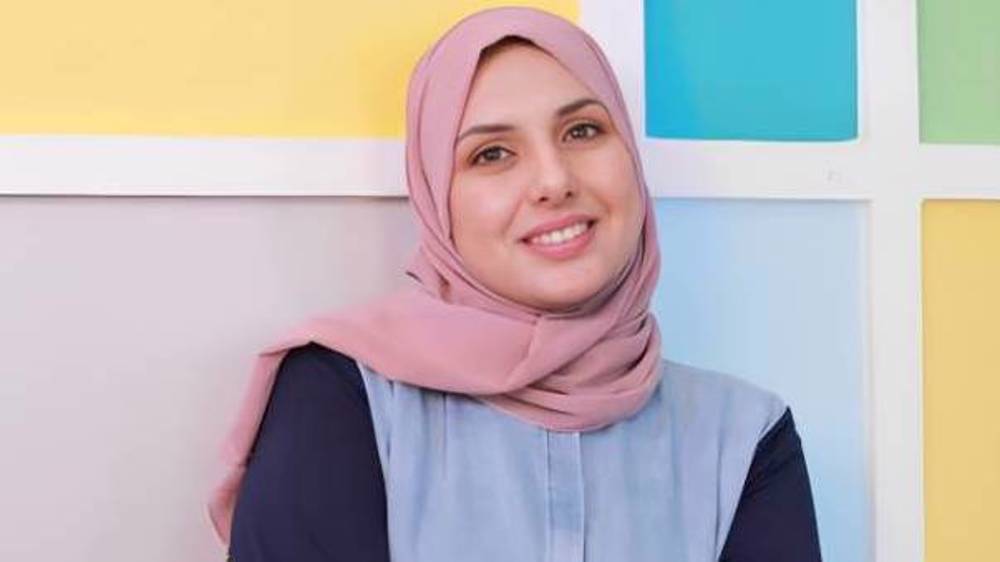
On December 1, a journalist with Quds News Network, Misrah Ahmed Salah, 22, was killed by Israel.
November 2024 was also a bloody month for Palestinian journalists in the Gaza Strip, with Israeli strikes killing dozens of them, including Wael Ibrahim Abu Koffah, 47, Mahmoud Saeed Al-Khateb, 23, Abd Al-Rahem Abd Rabbeh Al-Tahraoui, 28, and Ahmed Youssef Abu Shariya, 31.
In mid-November, Mohammed Saleh Al-Sharif, 31, was killed by an Israeli drone near Kamal Adwan Hospital in Gaza.
Earlier that month, journalist Ahmed Mohamed Ismail Abu Shkeel, 25, was targeted by an Israeli airstrike on Fahd Al-Sabbah School in the Al-Tuffah neighborhood, which sheltered displaced persons.
Baraa Ali Daghesh, 27, was killed on November 2 in a targeted airstrike on his family in the Al-Nuseirat camp in central Gaza. A day before Daghesh, photojournalist Belal Mohamed Raban Rajab, 27, working for Al-Quds Al-Youm channel, was killed in an attack near the Firas market in Gaza City.
In October 2024, coinciding with the anniversary of the Israeli genocidal campaign in the Gaza Strip, four Palestinian journalists were killed while trying to reveal Israeli war crimes.
The martyred journalists include Palestinian freelance photographer Amr Nahed Abu Ouda, 26, Saeed Saeed Radwan, 41, Haneen Mahmoud Salman Barrod, 30, and Nadya Emad Youssef Al-Said, 29.
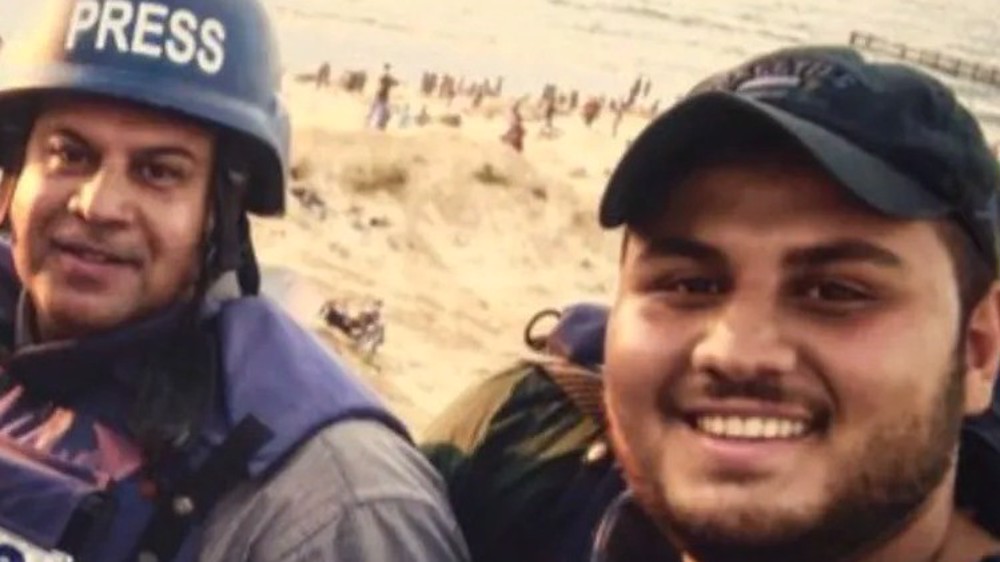
Journalists in Gaza have risked their lives with immense dedication to show the realities of the genocidal war that has claimed nearly 47,000 Palestinian lives in the past 470 days.
Despite a ceasefire coming into effect early on Sunday, January 19, the aggression continues.
Many of these journalists were killed along with their family members, like Ismail al-Ghoul and Rami al-Rifi, who were killed in Israeli strikes in the Shati refugee camp, west of Gaza City, in July 2024.
They were in their car, clearly marked as a press vehicle when it was hit. They had been reporting on the aftermath of the assassination of Hamas leader Ismail Haniyeh. Their tragic deaths sparked emotional responses from their colleagues and outrage across the world.
Hamza al-Dahdouh, the eldest son of senior Palestinian journalist Wael Dahdouh, was killed in an Israeli airstrike on January 7 in the western part of Khan Younis, Gaza.
He was traveling with three other journalists—Mustafa Thuraya, Hazem Rajab, and Samer Abu Daqqa—in a car clearly marked as a press vehicle when it was hit by a missile.
Thuraya and Abu Daqqa were also killed in the attack, while Hazem Rajab was seriously injured. The journalists were on their way to interview civilians displaced by previous bombings.
Al-Dahdouh, 27, was a freelance journalist like his father. His death came just months after he lost his mother, brother, sister, and nephew in an Israeli raid on October 25, 2023. Despite the immense personal loss, Wael Dahdouh continued his work, showing the world what was happening in Gaza.
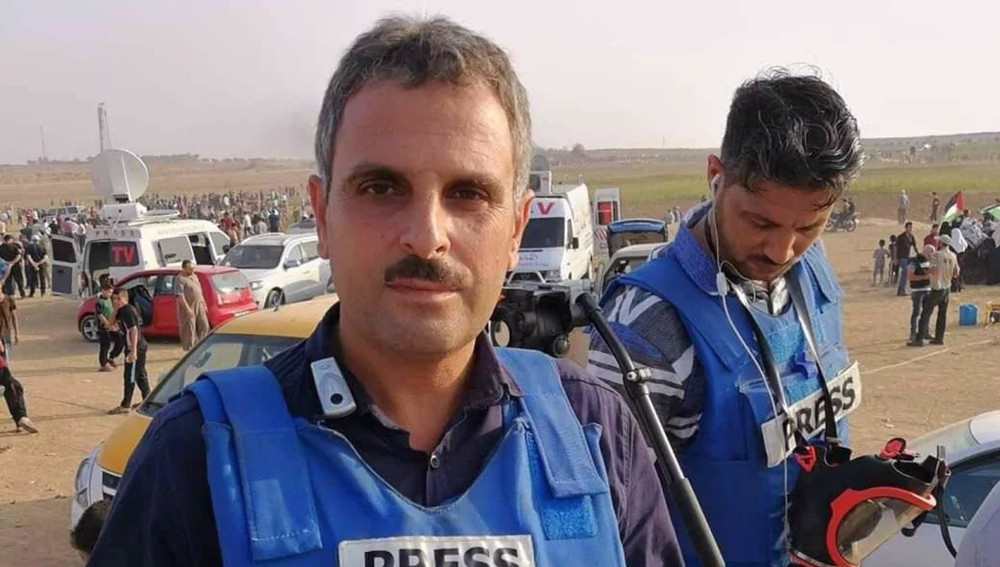
Abd Alhalim Awad, a media worker and driver for Al Aqsa TV, was killed in early 2024 in an Israeli strike. The attack not only took his life but also destroyed his home, leaving his family devastated.
Hassouneh Salim, a Palestinian freelance photojournalist, was killed in an Israeli airstrike on the Bureij refugee camp in central Gaza on January 7, 2024.
He was with his colleague and friend, Sari Mansour, the director of the Quds News Network when the strike occurred. The airstrike targeted their location, resulting in their deaths. His death, along with that of Sari Mansour, highlighted the extreme dangers faced by journalists in Gaza.
In July 2024, journalist Mohammed Jaser was killed in an Israeli airstrike on the Jabalia refugee camp in northern Gaza. The attack also took the lives of his wife, two young children, and his mother.
A similar tragedy befell Zakariyya Abu Ghali, a Palestinian journalist who was killed along with his mother and sister in an Israeli airstrike on Rafah in the southern Gaza Strip in early 2024.
In December 2023, an Israeli airstrike targeted the house of Jabr Abu Hadrous, a reporter for the Quds al-Youm broadcaster, in the Nuseirat refugee camp in northern Gaza, killing seven members of his family.
Amr Abu Hayya, who worked in the broadcasting department of Al Aqsa TV, was killed in an Israeli strike in Gaza on November 18, 2023. His death had a significant impact on the journalism community, highlighting the extreme dangers journalists face in Gaza.
On the same day, Palestinian photographer Musab Ashour was killed in an Israeli airstrike on the Nuseirat refugee camp in the Gaza Strip.
November 3 marked one of the darkest tragedies for journalists and their families in 2023, when Mohammed Abu Hatab, a journalist for Palestine TV, was killed along with 11 members of his family in an Israeli airstrike on their home in Khan Yunis, southern Gaza.
Israeli minister Ben-Gvir quits Netanyahu’s coalition over Gaza ceasefire
Hamas names 3 Israeli captives to be freed under Gaza ceasefire deal
Gaza ceasefire agreement ‘biggest defeat’ for Israel: Gen. Qa’ani
Iran’s digital economy wonders in face of sanctions
US warplanes target north of Yemen’s capital in fresh aggression
Rights group files war crimes case in Spain against Israeli soldier
VIDEO | Huge drop in mass protests against Trump’s 2nd inauguration
Gaza ceasefire agreement begins


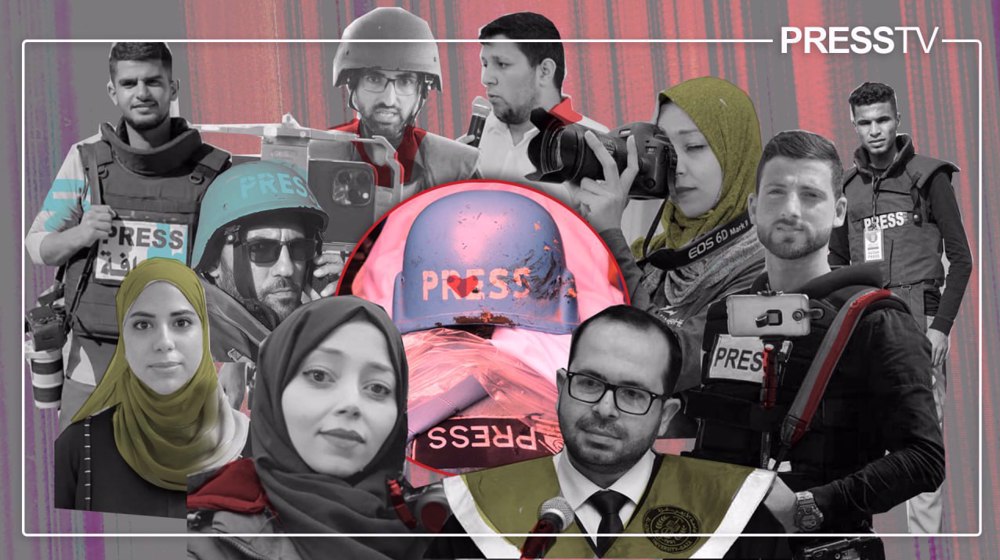
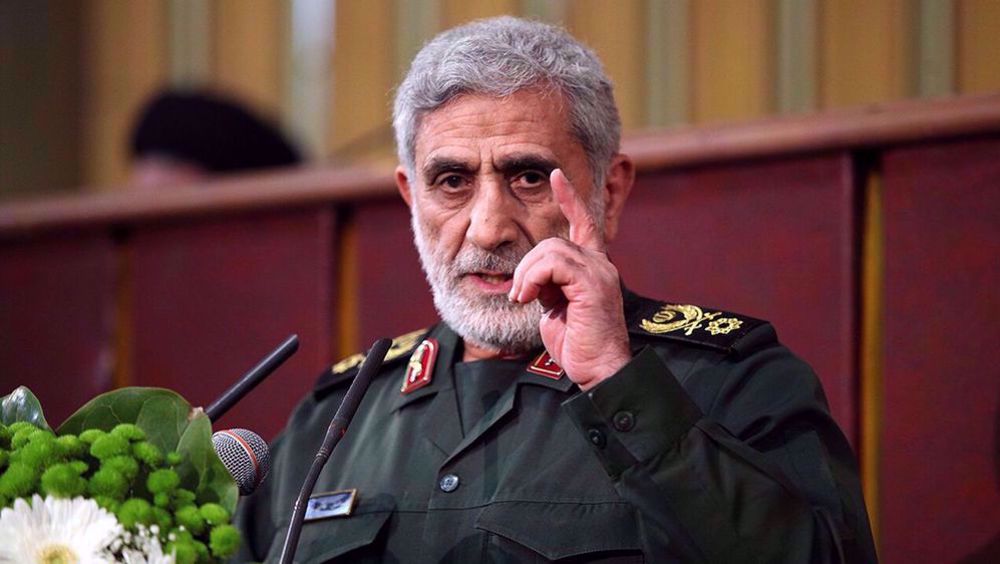
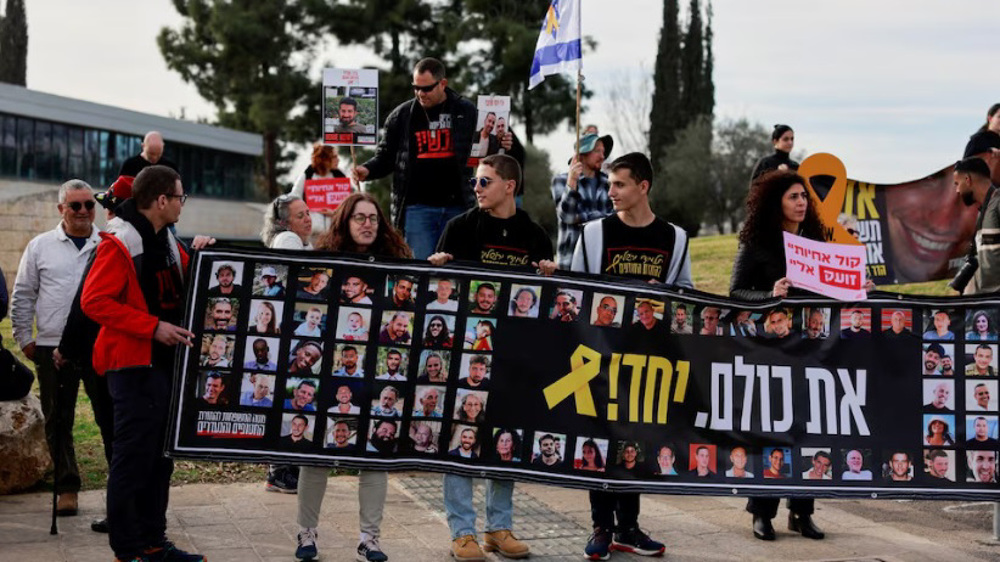
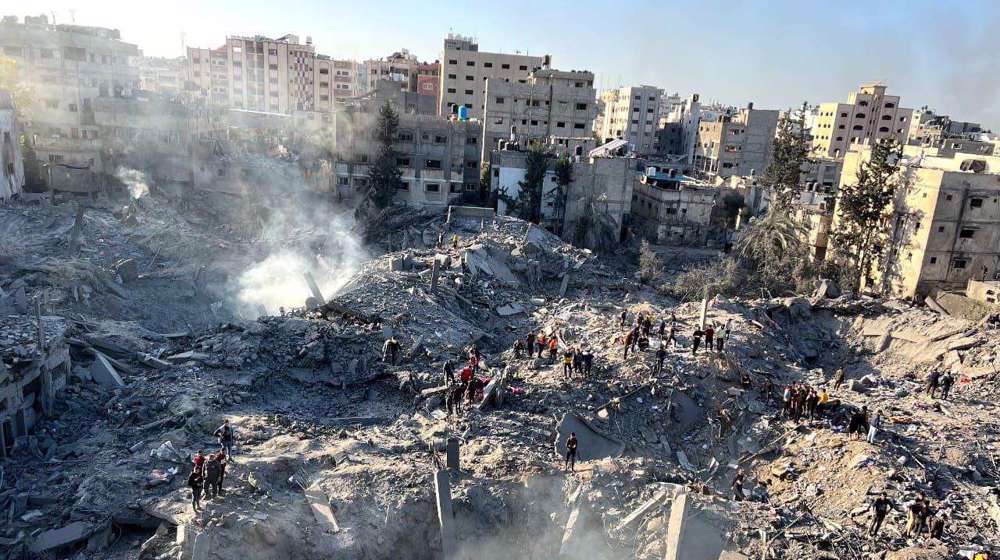



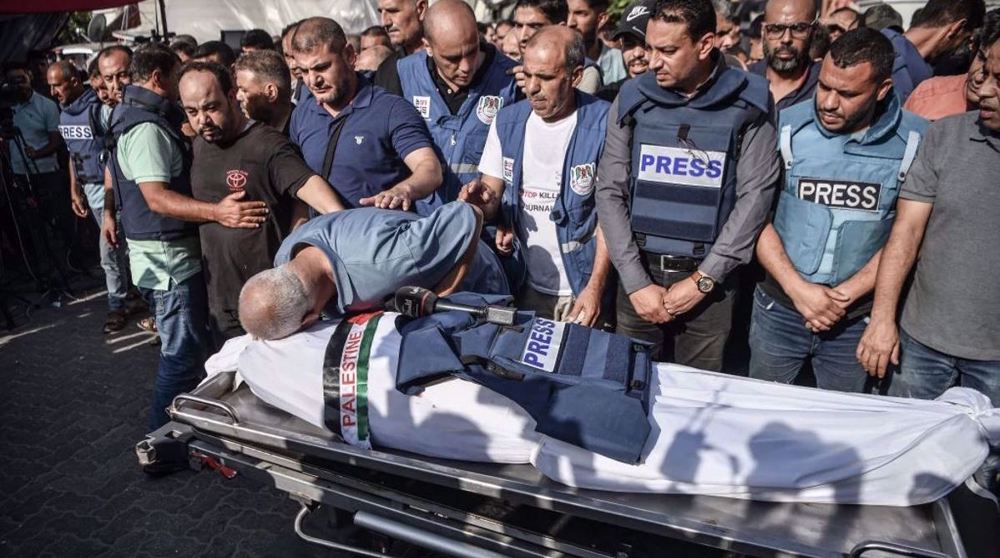
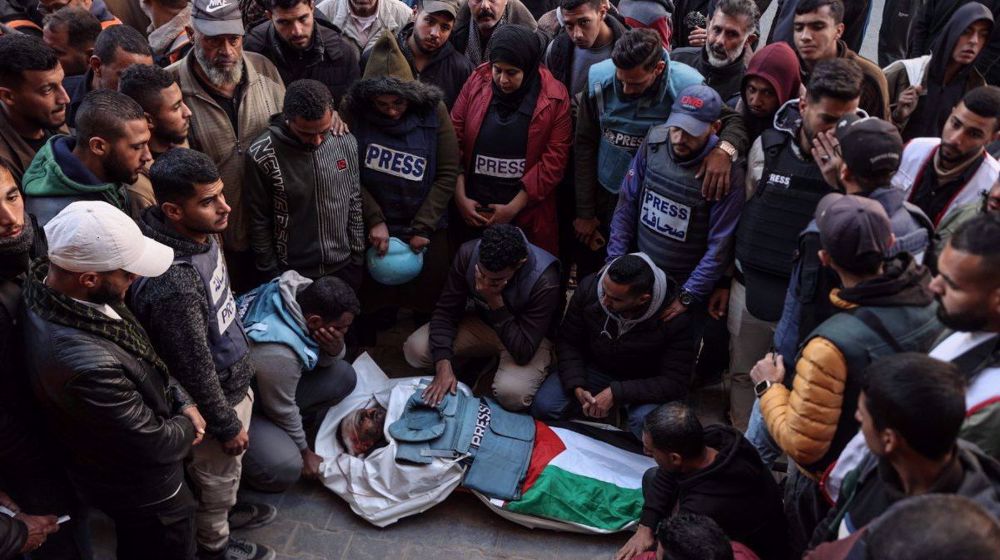
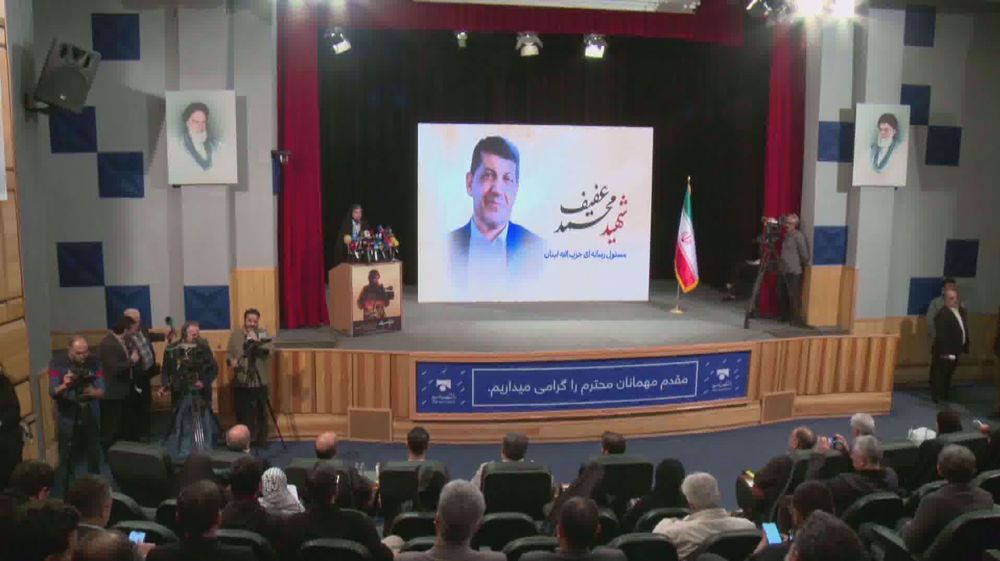
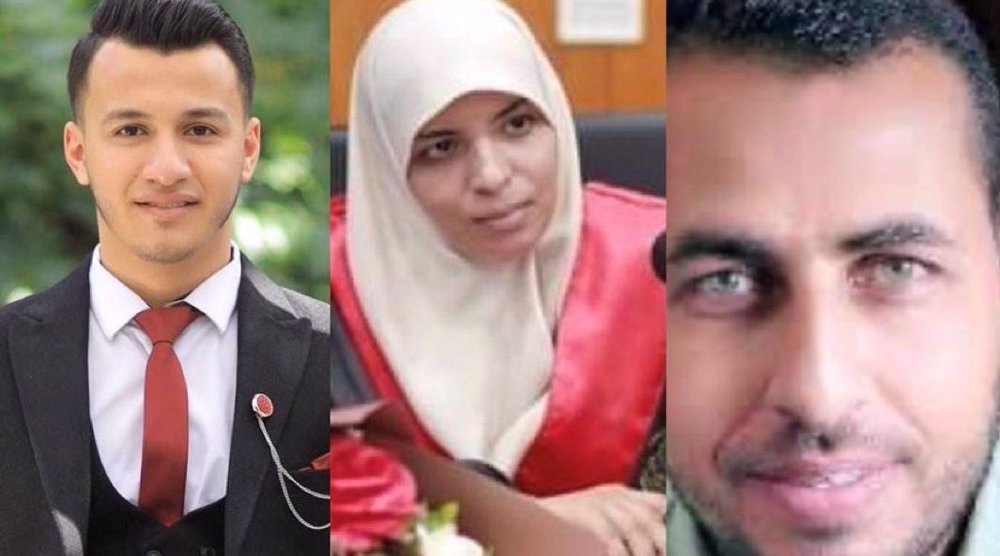
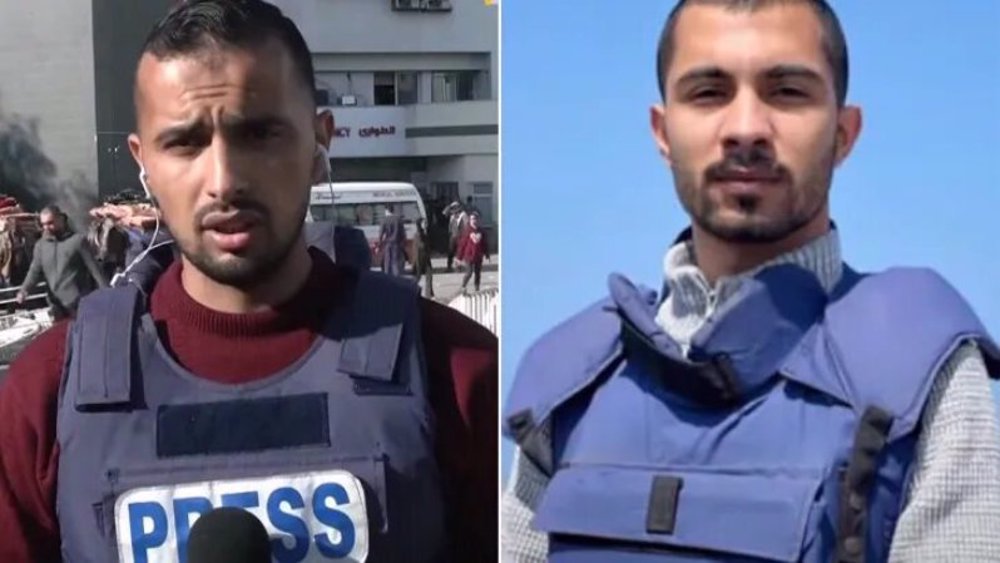

 This makes it easy to access the Press TV website
This makes it easy to access the Press TV website